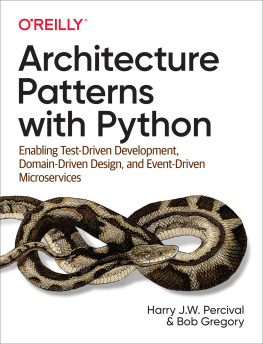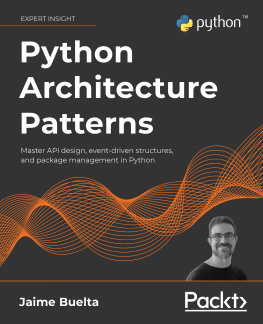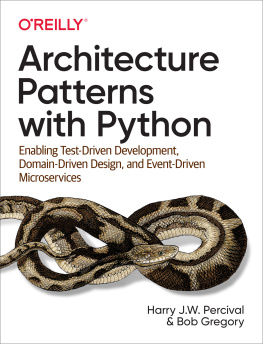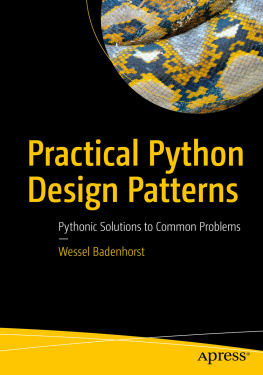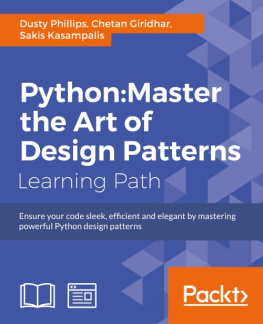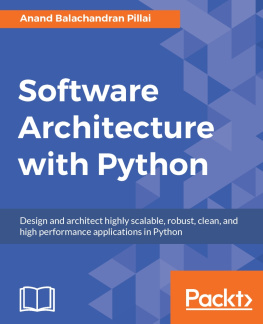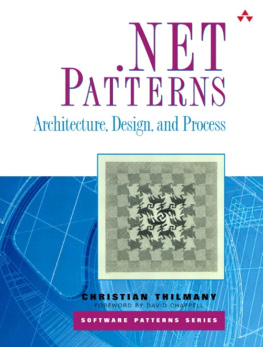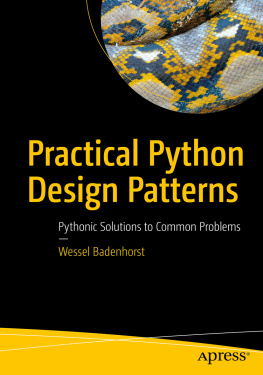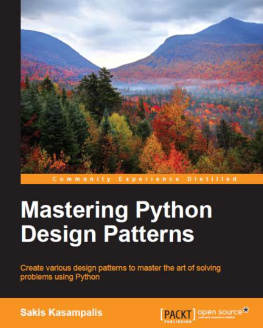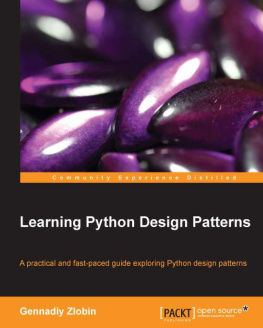Chetan Giridhar - Learning Python Design Patterns
Here you can read online Chetan Giridhar - Learning Python Design Patterns full text of the book (entire story) in english for free. Download pdf and epub, get meaning, cover and reviews about this ebook. year: 2016, publisher: Packt Publishing, genre: Computer. Description of the work, (preface) as well as reviews are available. Best literature library LitArk.com created for fans of good reading and offers a wide selection of genres:
Romance novel
Science fiction
Adventure
Detective
Science
History
Home and family
Prose
Art
Politics
Computer
Non-fiction
Religion
Business
Children
Humor
Choose a favorite category and find really read worthwhile books. Enjoy immersion in the world of imagination, feel the emotions of the characters or learn something new for yourself, make an fascinating discovery.

- Book:Learning Python Design Patterns
- Author:
- Publisher:Packt Publishing
- Genre:
- Year:2016
- Rating:4 / 5
- Favourites:Add to favourites
- Your mark:
Learning Python Design Patterns: summary, description and annotation
We offer to read an annotation, description, summary or preface (depends on what the author of the book "Learning Python Design Patterns" wrote himself). If you haven't found the necessary information about the book — write in the comments, we will try to find it.
Leverage the power of design patterns to solve real-world problems in Python software architecture, design, and application development
About This Book- Understand the structural, creational, and behavioral Python design patterns
- Get to know the context and application of design patterns to solve real-world problems in software architecture, design, and application development
- Get practical exposure through sample implementations in Python v3.5 for the design patterns featured
This book is for software architects and Python developers, and will be useful for novice engineers and seasoned architects as well. It requires a basic understanding of programming concepts and beginner level Python development experience. It will also be helpful for educational experiences for students and teachers in live learning environments.
What You Will Learn- Enhance your skills to create a better software architecture
- Understand proven solutions to commonly occurring design issues
- Explore the design principles that form the basis of software design, such as loose coupling, the Hollywood principle and the Open Close principle among others
- Delve into the object-oriented programming concepts and find out how they are used in software applications
- Develop an understanding of Creational Design Patterns and the different object creation methods that help you solve issues in software development
- Use Structural Design Patterns and find out how objects and classes interact to build larger applications
- Focus on the interaction between objects with the command and observer patterns
- Improve the productivity and code base of your application using Python design patterns
With the increasing focus on optimized software architecture and design, it is important that software architects think about optimizations in object creation, code structure, and interaction between objects at the architecture or design level. This makes sure that the cost of software maintenance is low and code can be easily reused or is adaptable to change. The key to this is reusability and low maintenance in design patterns.
Building on the success of the previous edition, Learning Python Design Patterns, Second Edition will help you implement real-world scenarios with Pythons latest release, Python v3.5.
We start by introducing design patterns from the Python perspective. As you progress through the book, you will learn about Singleton patterns, Factory patterns, and Facade patterns in detail. After this, well look at how to control object access with proxy patterns. It also covers observer patterns, command patterns, and compound patterns.
By the end of the book, you will have enhanced your professional abilities in software architecture, design, and development.
Chetan Giridhar: author's other books
Who wrote Learning Python Design Patterns? Find out the surname, the name of the author of the book and a list of all author's works by series.

